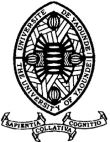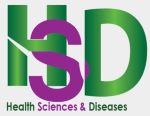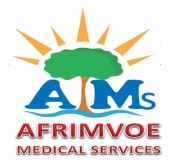Simplified Approach to the Integrated Management of Acute Malnutrition in Children 6 to 59 Months of Age in Bamako
Approche Simplifiée de Prise en Charge Intégrée de la Malnutrition Aigüe chez les Enfants de 6 à 59 Mois à Bamako
DOI:
https://doi.org/10.5281/hra.v3i3.6480Keywords:
Malnutrition aiguë, enfant, Afrique de l'Ouest, PB (périmètre brachial)Abstract
RÉSUMÉ
Introduction. Au Mali, la malnutrition constitue un problème de santé publique comme dans la plupart des pays de la bande du Sahel. L’objectif de l’étude était de démontrer la faisabilité, l’efficience et l’efficacité de la mise en place d’un protocole simplifié par rapport au protocole de prise en charge intégrée de la malnutrition aiguë (PCIMA) 2017 du Mali dans le district sanitaire urbain de la commune 1, Bamako, Mali. L’étude a porté sur les enfants MA âgés de 6 à 59 mois. Matériels et méthodes. La méthode a utilisé une approche mixte, qualitative et quantitative avec des formations, l’administration de questionnaires et la supervision de la prise en charge dans les centres de santé. Résultats. Les résultats obtenus montrent une efficacité et une efficience de notre approche avec des taux globaux de guérison et de mortalité enregistrés respectivement de 90,6% et 0,31%, la consommation moyenne d’aliment thérapeutique prêt à l’emploi (ATPE) est de 57 sachets par enfant pour un traitement complet comparé à 125 sachets pour le PCIMA. Les enfants admis avec un PB <115 mm ou œdème représentant 24 % du total des enfants admis dans le programme. Conclusion. La consommation d’ATPE pour un traitement complet est très encourageant dans notre contexte, avec un nombre d’ATPE moyen consommé par enfant largement inférieur à celle du PCIMA, permettant de rehausser considérablement la couverture puisque plus d’enfants peuvent être pris en charge par le reliquat.
ABSTRACT
Introduction. Malnutrition is a public health problem in Mali, as it is in most countries in the Sahel region. The objective of the study was to demonstrate the feasibility, efficiency and effectiveness of implementing a simplified protocol compared to Mali's integrated management protocol for acute malnutrition (PCIMA) 2017 protocol in the urban health district of Commune 1, Bamako, Mali. The study looked at children with acute malnutrition aged between 6 and 59 months. Materials and methods. The method used a mixed, qualitative and quantitative approach with training, the administration of questionnaires and the supervision of care in health centers. Results. The results show the effectiveness and efficiency of our approach, with overall cure and mortality rates of 90.6% and 0.31% respectively, and an average consumption of 57 sachets of ready-to-use therapeutic food (RUTF) per child for a complete course of treatment under the simplified protocol compared to 125 sachets under the PCIMA protocol. Children admitted with PB <115 mm or oedema accounted for 24% of all children admitted to the program. Conclusion. The consumption of RUTF for a complete course of treatment is very encouraging in our context, with an average number of RUTF consumed per child well below that of the PCIMA protocol, making it possible to increase coverage considerably since more children can be treated with the remainder.
References
1. OMS
2. https://www.who.int/fr/news-room/fact-sheets/detail/malnutrition, consulté le 07 août 2023).
3. Black RE, Victora CG, Walker SP, Bhutta ZA, Christian P, Onis M de, et al. Maternal and child undernutrition and overweight in low-income and middle-income countries. The Lancet. 2013; 382(9890):427 51
4. UNICEF/WHO/World Bank Group Joint Child Malnutrition Estimates, Levels and trends in child malnutrition, Key findings of the 2021 edition
5. Daures M, Phelan K, Issoufou M, Kouanda S, Sawadogo O, Issaley K, Cazes C, Séri B, Ouaro B, Akpakpo B, Mendiboure V, Shepherd S, Becquet R. New approach to simplifying and optimising acute malnutrition treatment in children aged 6-59 months: the OptiMA single-arm proof-of-concept trial in Burkina Faso. Br J Nutr. 2020 Apr 14;123(7):756-767. doi: 10.1017/S0007114519003258. Epub 2019 Dec 10. PMID: 31818335; PMCID: PMC7054246.)
6. Amanda M, Aminata S K, Caroline A, Nneka M, Kelsey N R, Lauren S, Mark J ManarySevere and Moderate Acute Malnutrition Can Be Successfully Managed with an Integrated Protocol in Sierra Leone1, 2, 3, 4,The Journal of Nutrition, Volume 145, Issue 11, 2015, Pages 2604-2609, ISSN 0022-3166, https://doi.org/10.3945/jn.115.214957.
7. Cécile, C, Kevin P, et al. 2023. Optimisation du dosage des aliments thérapeutiques prêts à l'emploi chez les enfants atteints de malnutrition aiguë sévère non compliquée en République démocratique du Congo : un essai contrôlé randomisé de non-infériorité, EClinicalMedicine., DOI: 10.1016/j.eclinm.2023.101878; PMID: 36915287
8. Isanaka S, Grais RF, Briend A, Checchi F. Estimates of the Duration of Untreated Acute Malnutrition in Children From Niger. Am J Epidemiol. 15 avr 2011;173(8):932‑40.
9. Burza S, Mahajan R, Marino E, Sunyoto T, Shandilya C, Tabrez M, et al. Community-based management of severe acute malnutrition in India: new evidence from Bihar. Am J Clin Nutr. 1 avr 2015; 101(4):847-59.
10. Isanaka S, Hanson KE, Frison S, et al. (2018) Le périmètre brachial comme seul critère de sortie de la prise en charge communautaire de la malnutrition aiguë sévère au Burkina Faso. Matern Child Nutr 15, e12688. [ DOI ] [ Article PMC gratuit ] [ PubMed ] [ Google Scholar ]
11. Fabiansen C, Phelan KP, Cichon B, Ritz C, Briend A, Michaelsen KF, et al. Short children with a low midupper arm circumference respond to food supplementation: an observational study from Burkina Faso1, 2. Am J Clin Nutr. 6 févr 2016; 103(2):415-21.
12. Somassé YE, Dramaix M, Bahwere P, Donnen P. Relapses from acute malnutrition and related factors in a community-based management programme in Burkina Faso. Matern Child Nutr. 2016 Oct; 12(4):908-17. doi: 10.1111/mcn.12197.Epub 2015 Jun 9
Downloads
Published
How to Cite
Issue
Section
License
Copyright (c) 2025 Keita FK, Cissoko M, Keita C, Diarra Y, Diall I, Shepherd S, Kone D, Coulibaly H, Niare B, Koita O

This work is licensed under a Creative Commons Attribution-NonCommercial-NoDerivatives 4.0 International License.
Authors who publish with this journal agree to the following terms:
- Authors retain copyright and grant the journal right of first publication with the work simultaneously licensed under a Creative Commons Attribution License CC BY-NC-ND 4.0 that allows others to share the work with an acknowledgement of the work's authorship and initial publication in this journal.
- Authors are able to enter into separate, additional contractual arrangements for the non-exclusive distribution of the journal's published version of the work (e.g., post it to an institutional repository or publish it in a book), with an acknowledgement of its initial publication in this journal.
- Authors are permitted and encouraged to post their work online (e.g., in institutional repositories or on their website) prior to and during the submission process, as it can lead to productive exchanges, as well as earlier and greater citation of published work










